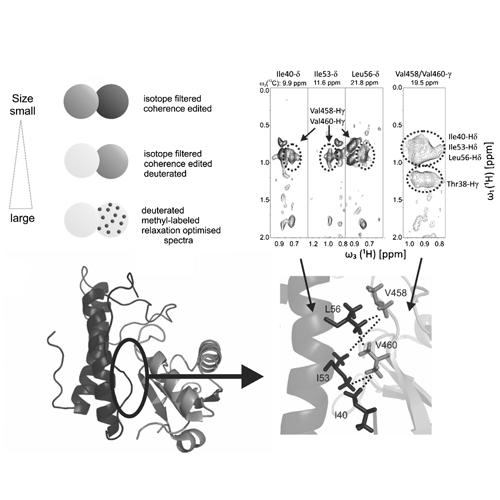NMR approaches for structural analysis of multidomain proteins and complexes in solution
07-Jul-2014
Progress in Nuclear Magnetic Resonance Spectroscopy, 2014, doi:10.1016/j.pnmrs.2014.05.003, Volume 80, Pages 26–63 published on 07.07.2014
Progress in Nuclear Magnetic Resonance Spectroscopy, online article
Progress in Nuclear Magnetic Resonance Spectroscopy, online article
NMR spectroscopy is a key method for studying the structure and dynamics of (large) multidomain proteins and complexes in solution. It plays a unique role in integrated structural biology approaches as especially information about conformational dynamics can be readily obtained at residue resolution. Here, we review NMR techniques for such studies focusing on state-of-the-art tools and practical aspects. An efficient approach for determining the quaternary structure of multidomain complexes starts from the structures of individual domains or subunits. The arrangement of the domains/subunits within the complex is then defined based on NMR measurements that provide information about the domain interfaces combined with (long-range) distance and orientational restraints. Aspects discussed include sample preparation, specific isotope labeling and spin labeling; determination of binding interfaces and domain/subunit arrangements from chemical shift perturbations (CSP), nuclear Overhauser effects (NOEs), isotope editing/filtering, cross-saturation, and differential line broadening; and based on paramagnetic relaxation enhancements (PRE) using covalent and soluble spin labels. Finally, the utility of complementary methods such as small-angle X-ray or neutron scattering (SAXS, SANS), electron paramagnetic resonance (EPR) or fluorescence spectroscopy techniques is discussed. The applications of NMR techniques are illustrated with studies of challenging (high molecular weight) protein complexes.











